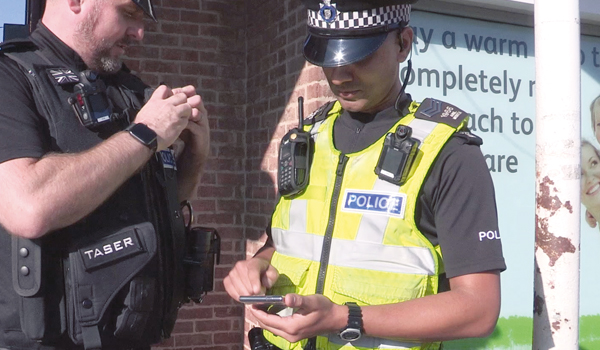New era for critical communications
Motorola Solutions says the new Emergency Services Network (ESN) has changed the landscape for integrated communications control systems (ICCS), driving the need for a unified multi-technology environment that seamlessly interoperates with both broadband and the existing Airwave Tetra (terrestrial trunked radio) networks.
Motorola Solutions says the new Emergency Services Network (ESN) has changed the landscape for integrated communications control systems (ICCS), driving the need for a unified multi-technology environment that seamlessly interoperates with both broadband and the existing Airwave Tetra (terrestrial trunked radio) networks.
It has responded by acquiring mobile assets communications system (MACS) technology developed by Cyfas Systems in readiness for the planned switch to the ESN.
MACS provides enhanced ICCS functionality to support critical control room operations such as dispatching and telephone call handling, and helping to ensure rapid emergency responses.
Designed for the next generation of control rooms, Motorola Solutions says the MACS unified communications platform will fundamentally enable a new deployment model for ICCS solutions, allowing emergency service organisations to move from a hardware-centric delivery model to a flexible software-based and secure cloud solution. This will allow significant benefits such as reduced IT maintenance costs, on-demand capacity expansion and pay-per-use billing.
Tom Guthrie, vice-president, Smart Public Safety Solutions at Motorola Solutions, said the cloud-based communications platform will enable the emergency services to prepare for a multi-technology control room environment.
MACS is ready to be incorporated into the ESN using cloud-based architecture that can be optimised for cloud-based deployments. The platform simplifies control room migration, reduces upgrade disruption and improves scalability.
Cloud architecture is the key enabler for control rooms undergoing a digital transformation. In addition to removing the need to manage and maintain on-site IT infrastructure, the cloud architecture improves agility, making it the perfect technology to transform control room operations, said Mr Guthrie.
The new ESN will deliver integrated critical voice and broadband data services to all three emergency services, replacing the existing Tetra communications system supplied by Airwave, which was acquired by Motorola Solutions UK earlier this year.
Motorola Solutions is responsible for the delivery of the user services contract (Lot 2) under the Governments Emergency Services Mobile Communications Programme (ESMCP), providing systems integration and public safety functionality.
The Government planned to roll out the ESN, which uses 4G LTE (long-term evolution) technology supplied by mobile operator EE, between September 2017 and December 2019.
It remains confident its new network will be delivered very close to its timescale despite concerns that it had slipped five months behind the agreed schedule.
The ESN is expected to produce significant savings over the existing Tetra system, which will largely be achieved by piggybacking the system on EEs existing 4G network.
EE has so far achieved 77 per cent UK coverage with a final target of 97 per cent the same as the Airwave blue-light communications system.
The Home Office has now awarded a £200 million framework agreement to design, develop and support the delivery of additional products, works and services to enable the full delivery of the ESN throughout the UK.
Five suppliers have been awarded places on the Acquire, Design and Build (ADB) agreement. This will be used to procure a number of functions, including the acquisition and management of greenfield sites on which to build passive infrastructure such as radio and transmission bases and masts, any civil construction activity necessary for commissioning sites, managing power connectivity and testing and remediation work.
The award of the ADB framework represents a wider focus as part of the Governments ESMCP to provide additional products and services within dispersed geographical areas to ensure the ESN can be more effectively delivered nationwide.
Out of nine tenders received by the Home Office, the suppliers awarded places on the framework are Ericsson, Obelisk Communications, Lend Lease Construct




